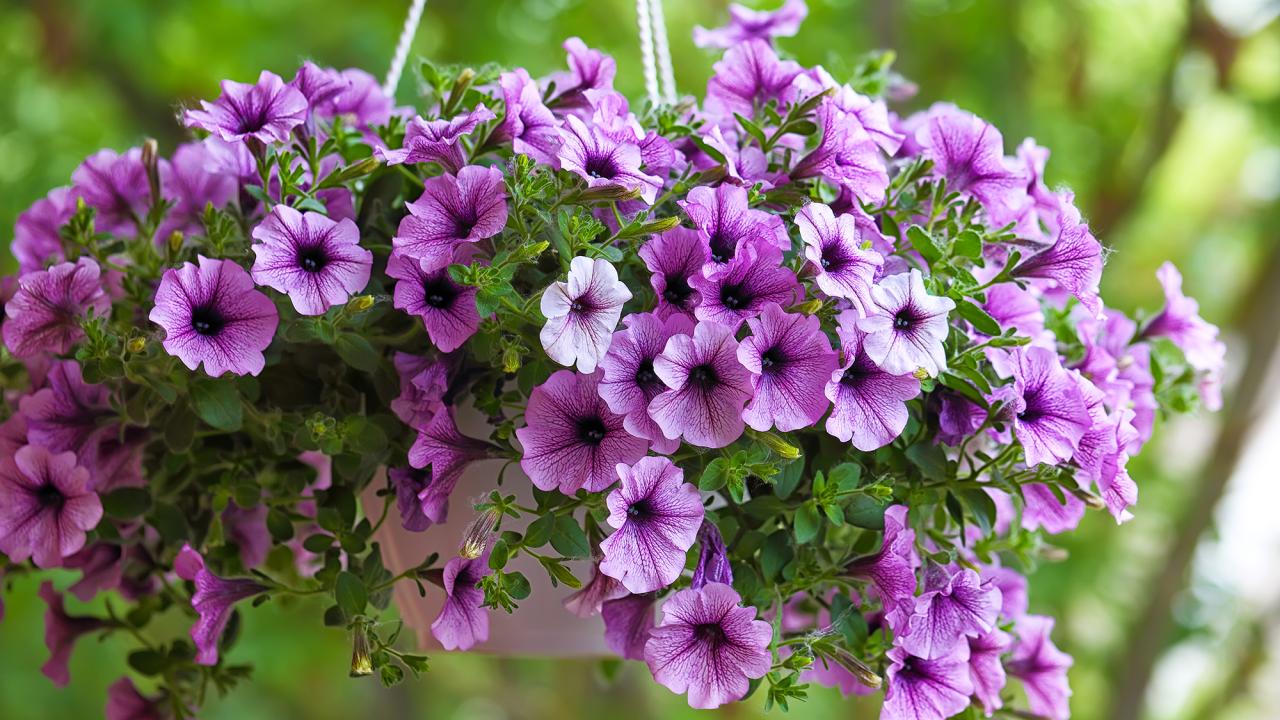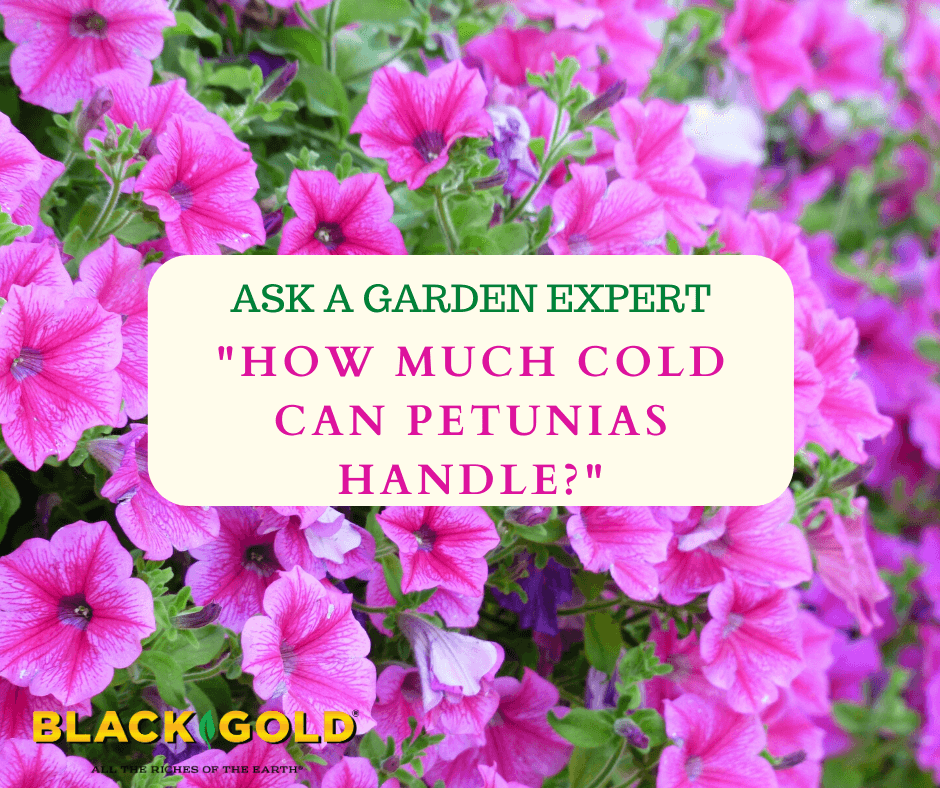What Temperatures Can Petunias Tolerate – Petunias are among the most popular flowering plants for gardens and containers, known for their vibrant colors and delightful fragrance. However, like all plants, they have specific temperature ranges they thrive in. Understanding the temperatures that petunias can tolerate is essential for successful growth and blooming. In this comprehensive guide, we will explore what temperatures are suitable for petunias, how to care for them in various temperature conditions, and tips for extending their growing season. 🌱
Understanding Petunias and Their Temperature Needs
Petunias belong to the Solanaceae family, which also includes tomatoes and peppers. They are native to South America and thrive in environments where temperatures are moderate to warm. These flowers have a remarkable ability to adapt, but there are limits to the temperatures they can endure.
Optimal Temperature Range for Petunias
Petunias generally prefer a temperature range of 60°F to 80°F (15°C to 27°C). Within this range, petunias will flourish, exhibiting vibrant flowers and healthy foliage.
| Temperature (°F) | Description ||——————-|————————————-|| 60°F – 80°F | Ideal growing conditions || 50°F – 60°F | Slow growth, possible stress || 40°F – 50°F | Risk of frost damage, poor growth || Below 40°F | Severe damage or death possible |
Petunias can tolerate slightly cooler temperatures during the night, but prolonged exposure to temperatures below 50°F can lead to stress, stunted growth, and even death. 🌸
Cold Tolerance: What Happens Below 50°F?

When temperatures drop below 50°F (10°C), petunias begin to exhibit signs of stress. Here’s what you need to know:
Petunias are not frost-hardy. If frost is predicted, cover your petunias with blankets or move them indoors if they are in pots.
Impact of Cold Temperatures on Petunias
Cold weather can cause several issues for petunias, including:
- Leaf Damage: Leaves may become discolored, turning yellow or black.
- Stunted Growth: Growth slows significantly as the plant struggles to survive.
- Flower Drop: Flower buds may drop before blooming, leading to reduced visual appeal.
How to Protect Petunias from Cold Temperatures
To safeguard your petunias from cold temperatures, consider the following strategies:
- Mulching: Apply a layer of mulch around the base of your plants to retain heat.
- Row Covers: Use row covers or floating row covers on cool nights to insulate your plants.
- Indoor Placement: Bring potted petunias indoors or into a greenhouse during unexpected cold spells.
Heat Tolerance: What Happens Above 80°F?

While petunias prefer moderate temperatures, they can also tolerate heat, especially varieties that have been bred for hot climates. However, high temperatures can present their own challenges.
Impact of High Temperatures on Petunias
When temperatures soar above 80°F (27°C), petunias may experience:
- Wilting: Excessive heat can cause petunias to wilt, especially if they are not receiving enough water.
- Fading Colors: Flowers may lose their vibrancy and fade quickly under intense sunlight.
- Flower Drop: Similar to cold conditions, heat can also cause flower buds to drop prematurely.
How to Protect Petunias from Heat Stress
To ensure your petunias thrive even in hot weather, consider these protective measures:
- Regular Watering: Ensure consistent watering, especially during heatwaves, to prevent wilting.
- Shade Cloth: Use shade cloth or strategically place your petunias where they receive partial shade during the hottest parts of the day.
- Proper Fertilization: Over-fertilization can increase plant stress. Use a balanced fertilizer during the growing season.
Transitional Temperatures: Acclimatization of Petunias: What Temperatures Can Petunias Tolerate
Petunias are adaptable but may need time to acclimatize when temperatures shift significantly. When transitioning from cooler spring temperatures to the heat of summer or vice versa, take the following steps:
Acclimatizing to Warmer Weather
When the weather starts to warm up, gradually expose your petunias to increased sunlight and heat:
- Increase Sunlight Gradually: Start with a few hours of morning sun and slowly increase exposure.
- Monitor Water Needs: As temperatures rise, monitor the soil moisture closely, increasing watering frequency if needed.
Acclimatizing to Cooler Weather
As temperatures begin to drop, it’s crucial to prepare your petunias:
- Reduce Watering: Scale back watering as growth slows in cooler weather.
- Protect from Frost: Anticipate frost warnings and take preventive actions, as previously discussed.
Growing Petunias in Varying Climates
Depending on where you live, the climate can drastically affect how you care for your petunias. Here are a few considerations based on climate type:
Cool Climate Regions
If you live in a cooler climate, consider the following:
- Start Indoors: Start petunia seeds indoors and transplant them outside after the last frost.
- Shorter Growing Seasons: Choose early-blooming varieties that can thrive in a shorter growing season.
Temperate Climate Regions
For those in temperate zones, you can enjoy a longer growing season with the following tips:
- Continuous Blooms: Regular deadheading (removing spent flowers) encourages continued blooming.
- Fertilize Monthly: Apply balanced fertilizer every month to support ongoing growth.
Hot Climate Regions
If you are in a hot climate, special care is necessary:
- Heat-Resistant Varieties: Look for petunia varieties bred to withstand high temperatures.
- Frequent Watering: Water consistently to avoid drought stress.
Signs of Stress in Petunias
Being able to identify signs of stress in your petunias is crucial for timely intervention. Here are some common indicators:
Visual Indicators, What Temperatures Can Petunias Tolerate
Watch for these visual cues:
- Wilting Leaves: This indicates the plant is lacking water or is under heat stress.
- Discoloration: Yellow or brown leaves may signify nutritional deficiencies or temperature extremes.
- Flower Bud Drop: A sign of stress that can result from both extreme cold and heat.
Responsive Actions
Upon noticing these signs, it’s essential to take responsive actions:
- Adjust Watering: Ensure that the plant is adequately hydrated.
- Provide Shade: Use temporary shade solutions for plants under excessive sunlight.
- Fertilize Appropriately: Address any nutrient deficiencies with a balanced fertilizer.
Conclusion
Understanding the temperature tolerance of petunias is key to successfully growing these beautiful flowers. By providing the right conditions and responding promptly to temperature changes, you can ensure vibrant blooms throughout the growing season. 🌼 With the right care and knowledge, petunias can be a stunning addition to your garden or landscape!
